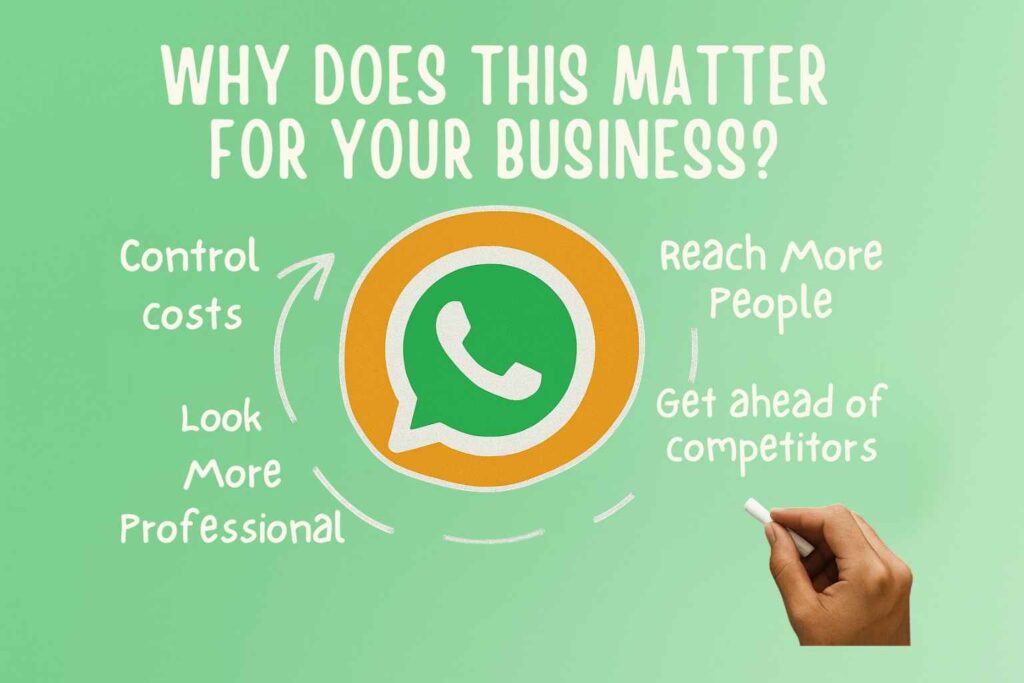If you run a business in India, chances are you’re already using WhatsApp — to send order updates, talk to customers, maybe even share your latest offers. It’s quick, personal, and honestly? Customers expect you to be there.
But July 2025 changed the game. Meta (WhatsApp’s parent company) just rolled out a bunch of updates, and they’re not small tweaks. We’re talking a whole new way of paying for messages, ads inside the app, and even AI assistants that can chat with your customers while you sleep.
It’s a lot to take in. So, let’s break it down.
The Big WhatsApp Changes in July 2025
1. You Now Pay Per Message
Old way: You paid for a whole 24‑hour chat window.
New way: You pay for each template message you send.
Sounds scary? It’s actually not bad. It makes you think before blasting messages. And if you send smart, well‑timed updates? You could end up paying less than before.
2. Ads Are Coming to WhatsApp (Don’t Panic)
No, they’re not in your chats (thankfully). They’re in the Updates tab — the section where you see Statuses and Channels.
This means your brand can now reach people inside WhatsApp without feeling intrusive. It’s kind of like Instagram Stories ads… but on WhatsApp.
3. Paid Channels Are a Thing
Picture this: a private WhatsApp channel where only your VIP customers get updates, offers, or insider content — and they pay a small subscription for it.
That’s exactly what WhatsApp is now allowing. And yes, you can promote your channel inside the app to get more subscribers.
4. Businesses Can Send Voice Notes & Take Calls
This one feels big. Imagine sending a personalized voice message instead of a text template. Or letting a customer call you directly inside WhatsApp.
It’s faster, more human, and a whole lot better than cold emails.
5. AI Chat Agents Are Here
Don’t want to spend all day replying to FAQs? Meta’s new AI agents can handle basic chats, qualify leads, and even help with sales.
It’s like having a 24/7 team member who never takes a chai break.
Okay, But Why Does This Matter for Your Business?

Because this isn’t “just an update.” It’s a chance to:
- Control costs – No more overpaying for conversations you don’t need.
- Reach more people – Ads + promoted channels mean new visibility.
- Look more professional – Voice notes + AI replies make you feel accessible without being overwhelming.
- Get ahead of competitors – Most businesses will take months to figure this out. You can start now.
How We’d Use These Features (If You Ask Us)
At Smit Branding, this is how we’d play it:
- Be selective with messages: Don’t send 10 useless updates. Send 1 that customers actually want to click.
- Build a branded channel: Share product launches, behind‑the‑scenes moments, exclusive deals — basically, make people WANT to subscribe.
- Mix humans + AI: Let AI answer FAQs at 2 AM, but keep your team for the real, high‑value conversations.
- Run cross‑platform ads: Combine WhatsApp with Facebook and Instagram ads for one seamless funnel.
- Watch the numbers: Track responses, adjust campaigns, repeat.
Why Work With Smit Branding?
You can DIY WhatsApp. Sure. But you’ll probably waste money figuring it out.
We don’t just “send messages.” We:
- Craft campaigns that actually bring leads and sales.
- Stay updated on every WhatsApp rule change (so you don’t get blocked).
- Integrate Meta ads across platforms for better ROI.
If you want to use WhatsApp as a growth machine instead of a glorified chat app, we’re your people.
Quick FAQs (Because You’re Probably Wondering)
Q: What exactly is WhatsApp Marketing in 2025?
It’s no longer just bulk messages. It’s ads, channels, AI bots, voice notes — the whole package.
Q: Is it more expensive now?
Not if you do it right. Pay‑per‑message means you control how much you spend.
Q: Can I advertise on WhatsApp?
Yep. Ads now live in the Updates tab.
Q: What’s a paid channel?
Think exclusive content on WhatsApp for people who value it enough to subscribe.
Q: Do I need an agency?
If you want results faster and don’t want to learn this the hard way, yes.
WhatsApp isn’t just for chatting anymore. It’s turning into a serious marketing tool — and the businesses who adapt now will dominate later.
Want to be one of them? Let’s talk.

